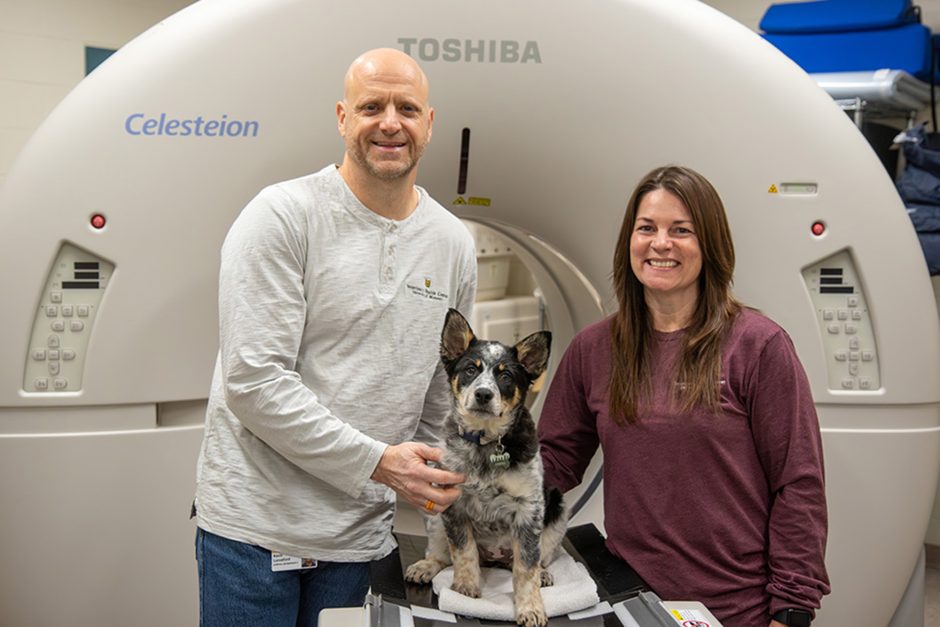
Oct. 24, 2024
When Joni and Kevin Lunceford graduated from the University of Missouri’s College of Health Sciences with degrees in nuclear medicine, they didn’t anticipate using their skills to help four-legged patients.
But after career changes allowed them to transition from human to animal nuclear medicine, they now can’t see themselves doing anything else. Joni Lunceford, B.S. ’02 and Kevin Lunceford, B.S. ’95 both work at Mizzou’s Veterinary Health Center (VHC).
The Luncefords recently talked about their transition from human to animal nuclear medicine, the challenges of working with patients who don’t speak your language, and why they couldn’t see themselves doing anything else.
How common of a career pathway is veterinary nuclear medicine?
Joni Lunceford: “It’s absolutely uncommon. There aren’t many places in the country that do what we do. When people want to get something unique done for their pets, we are usually the ones to do it. As far as PET-CT goes, to my knowledge, there are only seven veterinary PET-CT locations in the U.S. We’ve had dogs flown in from California, Texas — all over the country.”
How does nuclear medicine with animals differ from human patients?
Kevin Lunceford: “When you’re caring for patients here at the Veterinary Health Center, they don’t understand your language. A human patient is very motivated to hold still because it’s in their best interest, but in most cases, our animal friends are trying to do exactly the opposite of what you want them to do.”
Did your experiences translate well from humans to animals?
Kevin Lunceford: “After doing human nuclear medicine for so long, having a change and a challenge is a great thing. Thankfully, the fundamental knowledge that we picked up from doing human nuclear medicine still applies. Joni has a great understanding, knowing that motion and distance from the camera are our major enemies. She does a great job of applying those abilities that we perfected with human patients to get the best images we can here.”
How did your time at Mizzou prepare you for your career?
Joni Lunceford: “Going through the program at Mizzou and then working at University Hospital gave me a strong background in general nuclear medicine. The connections I made through both of those experiences have helped me throughout my career. Having the University of Missouri Research Reactor as well as the chemistry group here really lends itself to anything you might want to do as far as research goes. We have a phenomenal community of people at Mizzou where we can all work together to provide care for our companion animals and pursue research that may lead to future diagnostic and treatment options for animals and humans alike.”
Read more from the College of Health Sciences


